Toshiba m20 User Manual
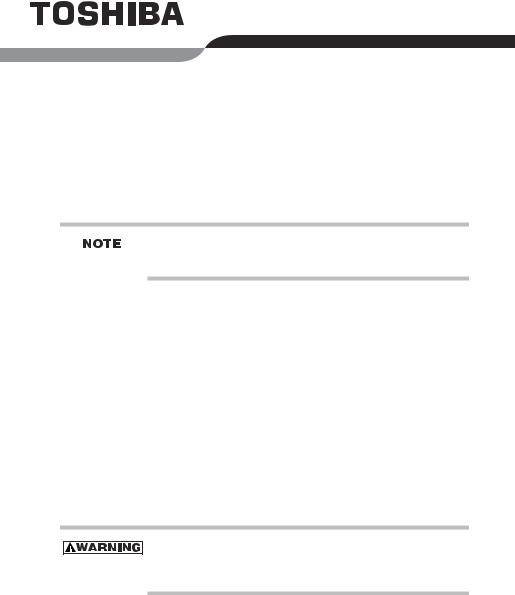
Satellite® M20 Series
Resource Guide
Keep this guide in a convenient place to access important information about your computer.
If you need assistance, use one of the following:
Toshiba Global Support Centre
Calling within the United States (800) 457-7777 Calling from outside the United States (949) 859-4273
Please fill in for your reference and future use:
Model name______________________________________
Part number______________________________________
Serial number____________________________________
Handling the cord on this product will expose you to lead, a chemical known to the State of California to cause birth defects or other reproductive harm. Wash hands after handling.

2
Contents |
|
Regulatory information ....................................................................... |
3 |
Introduction ...................................................................................... |
22 |
Setting up your computer and getting started................................... |
23 |
Your computer’s TFT display ............................................................. |
28 |
Inserting and removing PC Cards ..................................................... |
28 |
Learning the basics........................................................................... |
30 |
Playing a CD or DVD ......................................................................... |
32 |
Moving the computer........................................................................ |
35 |
Mobile computing ............................................................................. |
35 |
If something goes wrong .................................................................. |
40 |
If you need further assistance........................................................... |
43 |
Power cable connectors.................................................................... |
45 |
Features and specifications............................................................... |
45 |
Index ................................................................................................. |
49 |

Regulatory information |
3 |
|
Regulatory information
Model: Satellite ® P25 Series
ReWritable CD/DVD Drives
The computer system you purchased may include a ReWritable CD and/or DVD drive(s), among the most advanced data storage technologies available. As with any new technology, you must read and follow all set-up and usage instructions in the applicable user guides and/or manuals enclosed. If you fail to do so, this product may not function properly and you may lose data or suffer other damage. TOSHIBA AMERICA INFORMATION SYSTEMS (“TOSHIBA”), ITS AFFILIATES AND SUPPLIERS DO NOT WARRANT THAT OPERATION OF THE PRODUCT WILL BE UNINTERRUPTED OR ERROR FREE. YOU AGREE THAT TOSHIBA, ITS AFFILIATES AND SUPPLIERS SHALL HAVE NO RESPONSIBILITY FOR DAMAGE TO OR LOSS OF ANY BUSINESS, PROFITS, PROGRAMS, DATA OR REMOVABLE STORAGE MEDIA ARISING OUT OF OR RESULTING FROM THE USE OF THE PRODUCT, EVEN IF ADVISED OF THE POSSIBILITY THEREOF.
Protection of Stored Data
For your important data, please make periodic back-up copies of all the data stored on the hard disk or other storage devices as a precaution against possible failures, alteration, or loss of the data. IF YOUR DATA IS
ALTERED OR LOST DUE TO ANY TROUBLE, FAILURE OR MALFUNCTION OF THE HARD DISK DRIVE OR OTHER STORAGE DEVICES AND THE DATA CANNOT BE RECOVERED, TOSHIBA SHALL NOT BE LIABLE FOR ANY DAMAGE OR LOSS OF DATA, OR ANY OTHER DAMAGE RESULTING THEREFROM. WHEN COPYING OR TRANSFERRING YOUR DATA, PLEASE BE SURE TO CONFIRM WHETHER THE DATA HAS BEEN SUCCESSFULLY COPIED OR TRANSFERRED. TOSHIBA DISCLAIMS ANY LIABILITY FOR THE FAILURE TO COPY OR TRANSFER THE DATA CORRECTLY.
Critical Applications
The computer you have purchased is not designed for any “critical applications.” “Critical applications” means life support systems, medical applications, connections to implanted medical devices, commercial transportation, nuclear facilities or systems or any other applications where product failure could lead to injury to persons or loss of life or catastrophic property damage. ACCORDINGLY, TOSHIBA, ITS AFFILIATES
AND SUPPLIERS DISCLAIM ANY AND ALL LIABILITY ARISING OUT OF THE USE OF THE COMPUTER PRODUCTS IN ANY CRITICAL APPLICATIONS. IF YOU USE THE COMPUTER
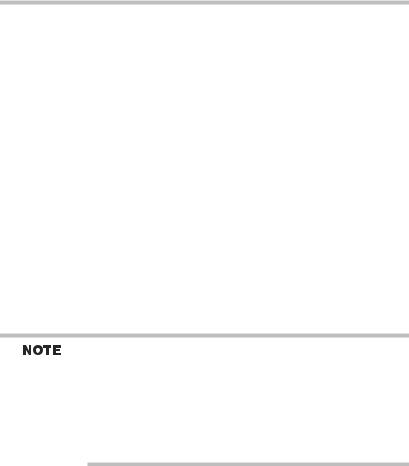
4 |
Regulatory information |
|
PRODUCTS IN A CRITICAL APPLICATION, YOU, AND NOT TOSHIBA, ASSUME FULL RESPONSIBILITY FOR SUCH USE.
FCC Notice
This equipment has been tested and found to comply with the limits for a Class B digital device, pursuant to Part 15 of the FCC rules. These limits are designed to provide reasonable protection against harmful interference in a residential installation.
This equipment generates, uses and can radiate radio frequency energy and, if not installed and used in accordance with the instructions, it may cause harmful interference to radio communications. However, there is no guarantee that interference will not occur in a particular installation. If this equipment does cause harmful interference to radio or television reception, which can be determined by turning the equipment off and on, the user is encouraged to try to correct the interference by one or more of the following measures:
Reorient or relocate the receiving antenna.
Increase the separation between the equipment and receiver.
Connect the equipment to an outlet on a circuit different from that to which the receiver is connected.
Consult the dealer or an experienced radio/TV technician for help.
Only Peripherals complying with the FCC Class B limits may be attached to this equipment. Operation with noncompliant peripherals or peripherals not recommended by Toshiba is likely to result in interference to radio and TV reception. Shielded cables must be used between the external devices and the computer's or expansion unit's serial port, parallel port, monitor port,
USB port, PS/2 port®, i.LINK® port and microphone jack. Changes or modifications made to this equipment not expressly approved by Toshiba or parties authorized by Toshiba could void the user's authority to operate the equipment.
This device complies with Part 15 of the FCC Rules. Operation is subject to the following two conditions:
This device may not cause harmful interference.
This device must accept any interference received, including interference that may cause undesired operation.
Contact:
Toshiba America Information Systems, Inc. 9740 Irvine Blvd.
Irvine, CA 92618-1697 (949) 583-3000
Industry Canada Requirement
This Class B digital apparatus complies with Canadian ICES-003.

Regulatory information |
5 |
|
Cet appareil numérique de la classe B est conformé à la norme NMB-003 du Canada.
FCC Requirements
The following information is pursuant to FCC CFR 47, Part 68 and refers to internal modems.
Installation
When you are ready to install or use the modem, call your local telephone company and give them the following information:
The telephone number of the line to which you will connect the modem.
The FCC registration number of the modem.
The ringer equivalence number (REN) of the modem, which is 0.6B.
The modem connects to the telephone line by means of a standard jack called the USOC RJ11C.
Type of Service
Your modem is designed to be used on standard-device telephone lines. Connection to telephone company-provided coin service (central office implemented systems) is prohibited. Connection to party lines service is subject to State tariffs. If you have any questions about your telephone line, such as how many pieces of equipment you can connect to it, the telephone company will provide this information upon request.
Telephone Company Procedures
The goal of the telephone company is to provide you with the best service it can. In order to do this, it may occasionally be necessary for them to make changes in their equipment, operations or procedures. If these changes might affect your service or the operation of your equipment, the telephone company will give you notice, in writing, to allow you to make any changes necessary to maintain uninterrupted service.
If Problems Arise
If any of your telephone equipment is not operating properly, you should immediately remove it from your telephone line, as it may cause harm to the telephone network. If the telephone company notes a problem, they may temporarily discontinue service. When practical, they will notify you in advance of this disconnection. If advance notice is not feasible, you will be notified as soon as possible. When you are notified, you will be given the opportunity to correct the problem and informed of your right to file a complaint with the FCC. In the event repairs are ever needed on your modem, they should be performed by Toshiba Corporation, Toshiba America Information Systems, Inc. or an authorized representative of Toshiba.

6 |
Regulatory information |
|
Disconnection
If you should ever decide to permanently disconnect your modem from its present line, please call the telephone company and let them know of this change.
Fax Branding
The Telephone Consumer Protection Act of 1991 makes it unlawful to use a computer or other electronic device to send any message via a telephone fax machine unless such message clearly contains in a margin at the top or bottom of each transmitted page or on the first page of the transmission, the date and time it is sent and an identification of the business, other entity or individual sending the message and the telephone number of the sending machine or such business, other entity or individual.
In order to program this information into your fax modem, you should complete the setup for your fax software before sending a message.
Instructions for IC CS-03 certified equipment
1NOTICE: The Industry Canada label identifies certified equipment. This certification means that the equipment meets certain telecommunications network protective, operational and safety requirements as prescribed in the appropriate Terminal Equipment Technical Requirements document(s). The Department does not guarantee the equipment will operate to the user’s satisfaction.
Before installing this equipment, users should ensure that it is permissible to be connected to the facilities of the local telecommunications company. The equipment must also be installed using an acceptable method of connection. The customer should be aware that compliance with the above conditions may not prevent degradation of service in some situations.
Repairs to certified equipment should be coordinated by a representative designated by the supplier. Any repairs or alterations made by the user to this equipment, or equipment malfunctions, may give the telecommunications company cause to request the user to disconnect the equipment.
Users should ensure for their own protection that the electrical ground connections of the power utility, telephone lines and internal metallic water pipe system, if present, are connected together. This precaution may be particularly important in rural areas.
Caution: Users should not attempt to make such connections themselves, but should contact the appropriate electric inspection authority, or electrician, as appropriate.
2The user manual of analog equipment must contain the equipment’s Ringer Equivalence Number (REN) and an explanation notice similar to the following:
The Ringer Equivalence Number (REN) of this device can be found on the label affixed to your computer.

Regulatory information |
7 |
|
NOTICE: The Ringer Equivalence Number (REN) assigned to each terminal device provides an indication of the maximum number of terminals allowed to be connected to a telephone interface. The termination on an interface may consist of any combination of devices subject only to the requirement that the sum of the Ringer Equivalence Numbers of all the devices does not exceed 5.
3The standard connecting arrangement (telephone jack type) for this equipment is jack type(s): USOC RJ11C.
Wireless LAN and your Health
Wireless LAN products, like other radio devices, emit radio frequency electromagnetic energy. The level of energy emitted by Wireless LAN devices however is far much less than the electromagnetic energy emitted by wireless devices like for example mobile phones.
Because Wireless LAN products operate within the guidelines found in radio frequency safety standards and recommendations, TOSHIBA believes Wireless LAN is safe for use by consumers. These standards and recommendations reflect the consensus of the scientific community and result from deliberations of panels and committees of scientists who continually review and interpret the extensive research literature.
In some situations or environments, the use of Wireless LAN may be restricted by the proprietor of the building or responsible representatives of the organization. These situations may for example include:
Using the Wireless LAN equipment on board of airplanes, or
In any other environment where the risk of interference to other devices or services is perceived or identified as harmful.
If you are uncertain of the policy that applies on the use of wireless devices in a specific organization or environment (e.g. airports), you are encouraged to ask for authorization to use the Wireless LAN device prior to turning on the equipment.
Regulatory Information
The TOSHIBA Wireless LAN Mini PCI Card must be installed and used in strict accordance with the manufacturer’s instructions as described in the user documentation that comes with the product. This device complies with the following radio frequency and safety standards.
Canada – Industry Canada (IC)
This device complies with RSS 210 of Industry Canada.
The installer of this radio equipment must ensure that the antenna is located or pointed such that it does not emit RF field in excess of Health Canada limits for the general population; consult Safety Code 6, obtainable from Health Canada’s website www.hc-sc.gc.ca/rpb. The RF device shall not be

8 |
Regulatory information |
|
co-located with any other transmitter that has not been tested with this device.
Operation is subject to the following two conditions: (1) this device may not cause interference, and (2) this device must accept any interference, including interference that may cause undesired operation of this device.
L ‘utilisation de ce dispositif est autorisée seulement aux conditions suivantes: (1) il ne doit pas produire de brouillage et (2) l’ utilisateur du dispositif doit étre prêt à accepter tout brouillage radioélectrique reçu, même si ce brouillage est susceptible de compromettre le fonctionnement du dispositif.
The term “IC” before the equipment certification number only signifies that the Industry Canada technical specifications were met.
To prevent radio interference to the licensed service, this device is intended to be operated indoors and away from windows to provide maximum shielding. Equipment (or its transmit antenna) that is installed outdoors is subject to licensing.
Pour empecher que cet appareil cause du brouillage au service faisant l'objet d'une licence, il doit etre utilize a l'interieur et devrait etre place loin des fenetres afin de Fournier un ecram de blindage maximal. Si le matriel (ou son antenne d'emission) est installe a l'exterieur, il doit faire l'objet d'une licence.
Europe – EU Declaration of Conformity
This device complies with the essential requirements of the R&TTE Directive 1999/5/EC with essential test suites as per standards:
EN 60950 Safety of Information Technology equipment
ETS 300 328 Technical requirements for radio equipment
ETS 300 826 General EMC requirements for radio equipment.
België/ |
For outdoor usage only channel 10 (2457 MHz) and 11 (2462 MHz) is |
Belgique: |
allowed. |
|
For private usage outside buildings across public grounds over less than |
|
300m no special registration with IBPT/BIPT is required. Registration |
|
to IBPT/BIPT is required for private usage outside buildings across pub- |
|
lic grounds over more than 300m. An IBPT/BIPT license is required for |
|
public usage outside building. For registration and license please contact |
|
IBPT/BIPT. |
|
|
|
Gebruik buiten gebouw alleen op kanalen 10 (2457 MHz) en 11 (2462 |
|
MHz). Voor privé-gebruik buiten gebouw over publieke groud over |
|
afstand kleiner dan 300m geen registratie bij BIPT/IBPT nodig; voor |
|
gebruik over afstand groter dan 300m is wel registratie bij BIPT/IBPT |
|
nodig. Voor publiek gebruik buiten gebouwen is licentie van BIPT/IBPT |
|
verplicht. Voor registratie of licentie kunt u contact opnemen met BIPT. |
|
|
|
|
Regulatory information |
9 |
|
|
|
|
|
|
|
|
|
|
|
|
|
|
|
|
|
|
L’utilisation en extérieur est autorisé sur le canal 10 (2457 MHz) et 11 |
|
|
|
|
(2462 MHz). Dans le cas d’une utilisation privée, a l’extérieur d’un bâti- |
||
|
|
ment, audessus d’un espace public, aucun enregistrement n’est néces- |
|
|
|
|
saire pour une distance de moins de 300m. Pour une distance supérieure |
||
|
|
à 300m un enregistrement auprés de I’IBPT est requise. Pour une utili- |
||
|
|
sation publique à I’extérieur de bâtiments, une licence de I’IBPT est req- |
||
|
|
uise. Pour les enregistrements et licences, veuillez contacter I’IBPT. |
|
|
|
|
|
||
|
Deutschland: |
License required for outdoor installations. Check with reseller for proce- |
||
|
|
dure to follow. |
|
|
|
|
|
|
|
|
|
Anmeldung im Outdoor-Bereich notwendig, aber nicht genehmigung- |
|
|
|
|
spflichtig. Bitte mit Händler die Vorgehensweise abstimmen. |
|
|
|
|
|
|
|
|
France: |
Restricted frequency band: only channels 10 and 11 (2457 MHz and |
|
|
|
|
2462 MHz respectively) may be used in France. License required for |
|
|
|
|
every installation, indoor and outdoor installations. Please contact ART |
||
|
|
for procedure to follow. |
|
|
|
|
|
|
|
|
|
Bande de fréquence restreinte : seuls les canaux 10 à 11 (2457 et 2462 |
|
|
|
|
MHz respectivement) doivent être utilisés en France. Toute utilisation, |
|
|
|
|
qu’elle soit intérieure ou extérieure, est soumise à autorisation. Vous |
|
|
|
|
pouvez contacter I’Autorité de Régulation des Télécommuniations |
|
|
|
|
(http://www.art-telecom.fr) pour la procédure à suivre. |
|
|
|
|
|
|
|
|
Italia: |
License required for indoor use. Use with outdoor installations not |
|
|
|
|
allowed. |
|
|
|
|
|
||
|
|
E’necessaria la concessione ministeriale anche per l’uso interno. Verifi- |
||
|
|
care con i rivenditori la procedura da seguire. L’uso per installazione in |
||
|
|
esterni non e’ permessa. |
|
|
|
|
|
||
|
Nederland: |
License required for outdoor installations. Check with reseller for proce- |
||
|
|
dure to follow. |
|
|
|
|
|
|
|
|
|
Licentie verplicht voor gebruik met buitenantennes. Neem contact op |
|
|
|
|
met verkoper voor juiste procedure. |
|
|
|
|
|
|
|
USA-Federal Communications Commission (FCC)
This device complies with Part 15 of FCC Rules. Operation of the devices in a Wireless LAN System is subject to the following two conditions:
This device may not cause harmful interference.
This device must accept any interference that may cause undesired operation.
TOSHIBA is not responsible for any radio or television interference caused by unauthorized modification of the devices included with this TOSHIBA
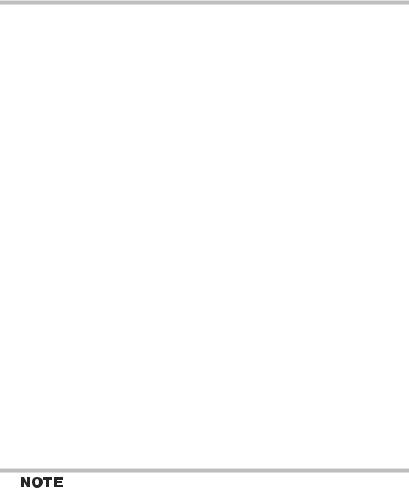
10 |
Regulatory information |
|
Wireless LAN Mini PCI Card, or the substitution or attachment of connecting cables and equipment other than specified by TOSHIBA.
The correction of interference caused by such unauthorized modification, substitution or attachment will be the responsibility of the user.
Caution: Exposure to Radio Frequency Radiation
The Toshiba Wireless LAN Mini PCI Card will be installed with one of two types of antennas. The both of antenna types, when installed are located at the upper edge of the LCD screen.
For both antennas, the radiated output power of the TOSHIBA Wireless LAN Mini PCI Card is far below the FCC radio frequency exposure limits. Nevertheless, the TOSHIBA Wireless LAN Mini PCI Card shall be used in such a manner that the potential for human contact during normal operation is minimized. In normal operating configuration, the LCD in the upright position, the distance between the antenna and the user should not be less than 20cm. The antenna(s) used for this transmitter must not be co-located or operating in conjunction with any other antenna or transmitter. Antenna(s) used in 5.15-5.25GHz frequency band must be integral antenna which provide no access to the end user.
Refer to the Regulatory Statements as identified in the documentation that comes with those products for additional information.
Caution: Radio Frequency Interference Requirements
This device is restricted to indoor use due to its operation in the 5.15 to 5.25 GHz frequency range. FCC requires this product to be used indoors for frequency range 5.15 to 5.25 GHz to reduce the potential for harmful interference to co-channel Mobile Satellite systems.
High power radars are allocated as primary users of the 5.25 to 5.35 GHz and 5.65 to 5.85 GHz bands. These radar stations can cause interference with and/or damage this device.
|
|
The above Caution information applies to products that operate with an |
|
|
802.11a device. |
Taiwan |
|
|
|
|
|
Article 14 |
Unless approved, for any model accredited low power radio frequency |
|
|
electric machinery, any company, trader or user shall not change the |
|
|
frequency, increase the power or change the features and functions of |
|
|
the original design. |
|
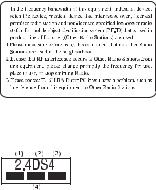
|
Regulatory information |
11 |
|
|
|
|
|
|
|
|
|
Article 17 |
Any use of low power radio frequency electric machinery shall not |
|
|
|
affect the aviation safety and interfere with legal communications. In |
||
event that any interference is found, the use of such electric machinery shall be stopped immediately, and reusing of such products can be resumed until no interference occurs after improvement.
The legal communications mentioned in the above item refer to radio communications operated in accordance with telecommunication laws and regulations.
Low power radio frequency electric machinery shall resist against interference from legal communications or from industrial, scientific and medical radio emission electric machinery.
Using this equipment in Japan
In Japan, the frequency bandwidth of 2,400-2,483.5 MHz for second generation lowpower data communication systems such as this equipment overlaps that of mobile object identification systems (premises radio station and specified low-power radio station).
1. Sticker
Please put the following sticker on devices incorporating this product.
2. Indication
The indication shown below appears on this equipment.
12.4 this equipment uses a frequency of 2.4GHz.
2DS.This equipment uses DS-SS modulation.
3The interference range of this equipment is less than 40m.
4This equipment uses a frequency bandwidth from 2,400 MHz to 2,483.5 MHz.
It is possible to avoid the band of mobile object identification systems.
3. TOSHIBA Direct PC
Monday – Friday: 10:00 – 17:00

12 |
Regulatory information |
|
Toll Free Tel: 0120-13-1100
Direct Dial: 03-3457-5916
Fax: 03-5444-9450
Device Authorization
This device obtains the Technical Regulation Conformity Certification and the Technical Conditions Compliance Approval, and it belongs to the device class of radio equipment of low-power data communication system radio station stipulated in the Radio Law and the Telecommunications Business Law of Japan.
The Name of the radio equipment: MPC13A-20/R
JAPAN APPROVALS INSTITUTE FOR TELECOMMUNICATIONS EQUIPMENT
Approval Number: D01-1128JP
TELECOM ENGINEERING CENTER Approval Number: 03NY.A0018, 03GZDA0017
The following restrictions apply:
Do not disassemble or modify the device.
Do not install the embedded wireless module into other device.
Interference Statement
This equipment has been tested and found to comply with the limits for a Class B digital device, pursuant to Part 15 of the FCC Rules. These limits are designed to provide reasonable protection against harmful interference in a residential installation. This equipment generates, uses, and can radiate radio frequency energy. If not installed and used in accordance with the instructions, it may cause harmful interference to radio communications. However, there is no guarantee that interference will not occur in a particular installation.
If this equipment does cause harmful interference to radio or television reception, which can be determined by turning the equipment off and on, the user is encouraged to try and correct the interference by one or more of the following measures:
Reorient or relocate the receiving antenna.
Increase the distance between the equipment and the receiver.
Connect the equipment to an outlet on a circuit different from that to which the receiver is connected.
Consult the dealer or an experienced radio/TV technician for help.
Toshiba is not responsible for any radio or television interference caused by unauthorized modification of the devices included with this Toshiba Wireless LAN Mini PCI Card, or the substitution or attachment of connecting cables and equipment other than specified by Toshiba.
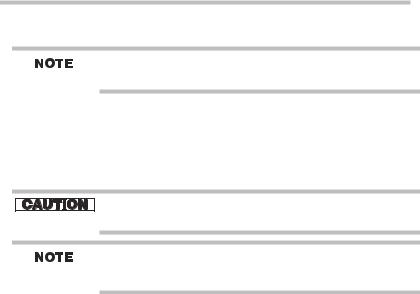
Regulatory information |
13 |
|
The correction of interference caused by such unauthorized modification, substitution or attachment will be the responsibility of the user.
The following information is dependant on what type of wireless device is in your computer.
Approved Countries/Regions for use for the Atheros AR5001X Mini PCI Wireless network adapter
This equipment is approved to the radio standard by the countries/regions in the following table.
Do not use this equipment except in the countries/regions in the following table.
This device works on passive scan only.
A peer-to-peer mode is not available in 802.11a and Turbo Mode.
802.11b (2.4GHz)
Australia |
Austria |
Belgium |
|
|
|
Canada |
Denmark |
Finland |
|
|
|
France |
Germany |
Greece |
|
|
|
Ireland |
Italy |
Liechtenstein |
|
|
|
Luxembourg |
Netherlands |
New Zealand |
|
|
|
Norway |
Portugal |
Sweden |
|
|
|
Switzerland |
UK |
USA |
|
|
|
802.11a (5GHz) |
|
|
|
|
|
Australia |
Austria |
Belgium |
|
|
|
Canada |
Denmark |
Finland |
|
|
|
France |
Germany |
Greece |
|
|
|
Ireland |
Italy |
Liechtenstein |
|
|
|
Luxembourg |
Netherlands |
New Zealand |
|
|
|
Norway |
Portugal |
Sweden |
|
|
|
Switzerland |
UK |
USA |
|
|
|
Turbo Mode (5GHz) |
|
|
|
|
|
Canada |
USA |
|
|
|
|
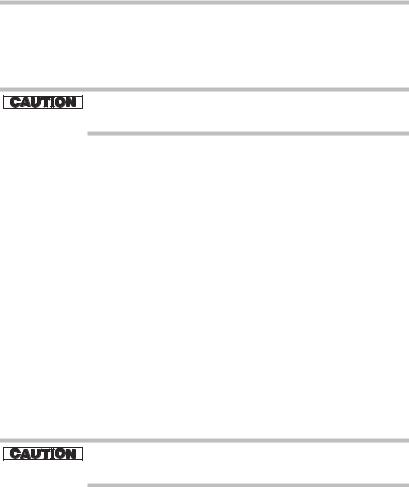
14 |
Regulatory information |
|
Approved Countries/Regions for use for the Intel® PRO/Wireless LAN 2100 3B Mini PCI Adapter
This equipment is approved to the radio standard by the countries/regions in the following table.
Do not use this equipment except in the countries/regions in the following table.
Argentina |
Australia |
Austria |
|
|
|
Belgium |
Brazil |
Canada |
|
|
|
Chile |
Denmark |
Finland |
|
|
|
France |
Germany |
Greece |
|
|
|
Iceland |
Ireland |
Italy |
|
|
|
Japan |
Liechtenstein |
Luxembourg |
|
|
|
Mexico |
Netherlands |
New Zealand |
|
|
|
Norway |
Peru |
Portugal |
|
|
|
Singapore |
Spain |
Sweden |
|
|
|
Switzerland |
UK |
Uruguay |
|
|
|
USA |
Venezuela |
|
|
|
|
Approved Countries/Regions for use for the Toshiba Mini PCI Wireless LAN Card
This equipment is approved to the radio standard by the countries/regions in the following table.
Do not use this equipment except in the countries/regions in the following table.
Australia |
Austria |
Belgium |
|
|
|
Canada |
Denmark |
Finland |
|
|
|
France |
Germany |
Greece |
|
|
|
Hong Kong |
Iceland |
Ireland |
|
|
|
Italy |
Japan |
Liechtenstein |
|
|
|
Luxembourg |
Malaysia |
Netherlands |
|
|
|
New Zealand |
Norway |
Philippines |
|
|
|
Portugal |
Singapore |
Spain |
|
|
|
Sweden |
Switzerland |
Thailand |
|
|
|
UK |
USA |
|
|
|
|

Regulatory information |
15 |
|
Bluetooth wireless technology Interoperability
Bluetooth™ Cards from TOSHIBA are designed to be interoperable with any product with Bluetooth wireless technology that is based on Frequency Hopping Spread Spectrum (FHSS) radio technology, and is compliant to:
Bluetooth Specification Ver.1.1, as defined and approved by The Bluetooth Special Interest Group.
Logo certification with Bluetooth wireless technology as defined by The Bluetooth Special interest Group.
Bluetooth wireless technology is a new innovative technology, and TOSHIBA has not confirmed compatibility of its Bluetooth™ products with all PCs and/ or equipment using Bluetooth wireless technology other than TOSHIBA portable computers.
Always use Bluetooth™ cards from TOSHIBA in order to enable wireless networks over two or more (up to a total of seven) TOSHIBA portable computers using these cards. Please contact TOSHIBA PC product support on Web site http://www.toshiba-europe.com/computers/tnt/bluetooth.htm in Europe or http://www.pcsupport.global.toshiba.com in the United States for more information.
When you use Bluetooth™ cards from TOSHIBA close to 2.4 GHz Wireless LAN devices, Bluetooth transmissions might slow down or cause errors. If you detect certain interference while you use Bluetooth™ cards from TOSHIBA, always change the frequency, move your PC to the area outside of the interference range of 2.4 GHz Wireless LAN devices (40 meters/43.74 yards or more) or stop transmitting from your PC. Please contact TOSHIBA PC product support on Web site http://www.toshiba-europe.com/computers/ tnt/bluetooth.htm in Europe or http://www.pcsupport.global.toshiba.com in the United States for more information.
Bluetooth™ and Wireless LAN devices operate within the same radio frequency range and may interfere with one another. If you use Bluetooth™ and Wireless LAN devices simultaneously, you may occasionally experience a less than optimal network performance or even lose your network connection. If you should experience any such problem, immediately turn off either one of your Bluetooth™ or Wireless LAN. Please contact Toshiba PC product support on web site http:// www.toshiba-europe.com/computers/tnt/bluetooth.htm in Europe or http:// www.pcsupport.global.toshiba.com in the United States for more information.
Bluetooth wireless technology and your Health
The products with Bluetooth wireless technology, like other radio devices, emit radio frequency electromagnetic energy. The level of energy emitted by devices with Bluetooth wireless technology however is far much less than the electromagnetic energy emitted by wireless devices like for example mobile phones.

16 |
Regulatory information |
|
Because products with Bluetooth wireless technology operate within the guidelines found in radio frequency safety standards and recommendations, TOSHIBA believes Bluetooth wireless technology is safe for use by consumers. These standards and recommendations reflect the consensus of the scientific community and result from deliberations of panels and committees of scientists who continually review and interpret the extensive research literature.
In some situations or environments, the use of Bluetooth wireless technology may be restricted by the proprietor of the building or responsible representatives of the organization. These situations may for example include:
Using the equipment with Bluetooth wireless technology on board of airplanes, or
In any other environment where the risk of interference to other devices or services is perceived or identified as harmful.
If you are uncertain of the policy that applies on the use of wireless devices in a specific organization or environment (e.g. airports), you are encouraged to ask for authorization to use the device with Bluetooth wireless technology prior to turning on the equipment.
Regulatory statements
This product complies with any mandatory product specification in any country/ region where the product is sold. In addition, the product complies with the following:
European Union (EU) and EFTA
This equipment complies with the R&TTE directive 1999/5/EC and has been provided with the CE mark accordingly.
Canada-Industry Canada (IC)
This device complies with RSS 210 of Industry Canada.
Operation is subject to the following two conditions: (1) this device may not cause interference, and (2) this device must accept any interference, including interference that may cause undesired operation of this device.”
L ‘ utilisation de ce dispositif est autorisée seulement aux conditions suivantes : (1) il ne doit pas produire de brouillage et (2) l’ utilisateur du dispositif doit étre prét à accepter tout brouillage radioélectrique reçu, même si ce brouillage est susceptible de compromettre le fonctionnement du dispositif.
The term "IC" before the equipment certification number only signifies that the Industry Canada technical specifications were met.
